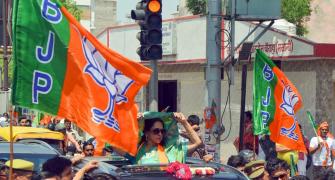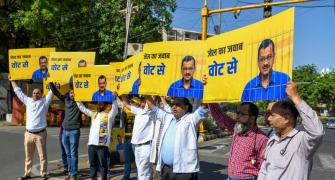Ten lakh more Indians joined the ranks of the unemployed between 2000-01 and 2001-02. Unemployment figures went up from 79 lakh (7.9 million) to 89 lakh (8.9 million), an increase of over 12 per cent, between these two years.
Results of the 57th round of the National Sample Survey show that the number of unemployed people in rural areas went up from 38 lakh (3.8 million) to 45 lakh (4.5 million), an increase of over 18 per cent. In urban India, the number of unemployed people went up over 7 per cent from 41 lakh (4.1 million) to 44 lakh (4.4 million).
The numbers were arrived at by multiplying the number of unemployed per 1,000 persons (as reported in the 56th and 57th round of sample surveys) by the urban and rural male and female populations in India as per the Census of 2001.
The two rounds are thin sample rounds and not strictly comparable, say demographers.
However, this rough picture of the unemployment trend is disturbing. Only rural males had a relatively easy time in the job market.
Among urban males, the quantum of unemployment rose by 5.9 per cent from 34 lakh (3.4 million) to 36 lakh (3.6 million), but this was accompanied by a 1.5 per cent increase in the LFPR (labour force participation rate) from 784 to 796. The LFPR is a measure of the number of persons willing to work per 1,000 population in the working age group.
Unemployment among urban females rose 14 per cent from 700,000 to 800,000 between 2000-01 and 2001-02. LFPR in this period, however, fell 4 per cent, indicating that unemployment was rising despite a fall in the number of women looking for work.
This trend in LFPR for urban females could be on account of their delaying entry into the labour market in order to go in for higher education, said Pronab Sen, adviser, Planning Commission.
The rising unemployment would not be a cause for worry as long as it was accompanied by rising real wages, said SD Tendulkar, professor, Delhi School of Economics. He added that a tightening labour market was a good sign. Over the 1990s, real wages for urban women rose faster than for men.
The number of unemployed rural males fell from 3.4 million to 2.7 million between the two rounds. This fall of over 20 per cent in the number of unemployed persons was accompanied by a 1.4 per cent increase in the LFPR from 864 to 876.
Unemployment among rural females went up sharply. As against 400,000 unemployed in 2000-01, 18 lakh (1.8 million) were unemployed in 2001-02. While the quantum of unemployment went up 350 per cent, the LFPR rose 8 per cent from 435 to 470, indicating a significant shortage of employment.






